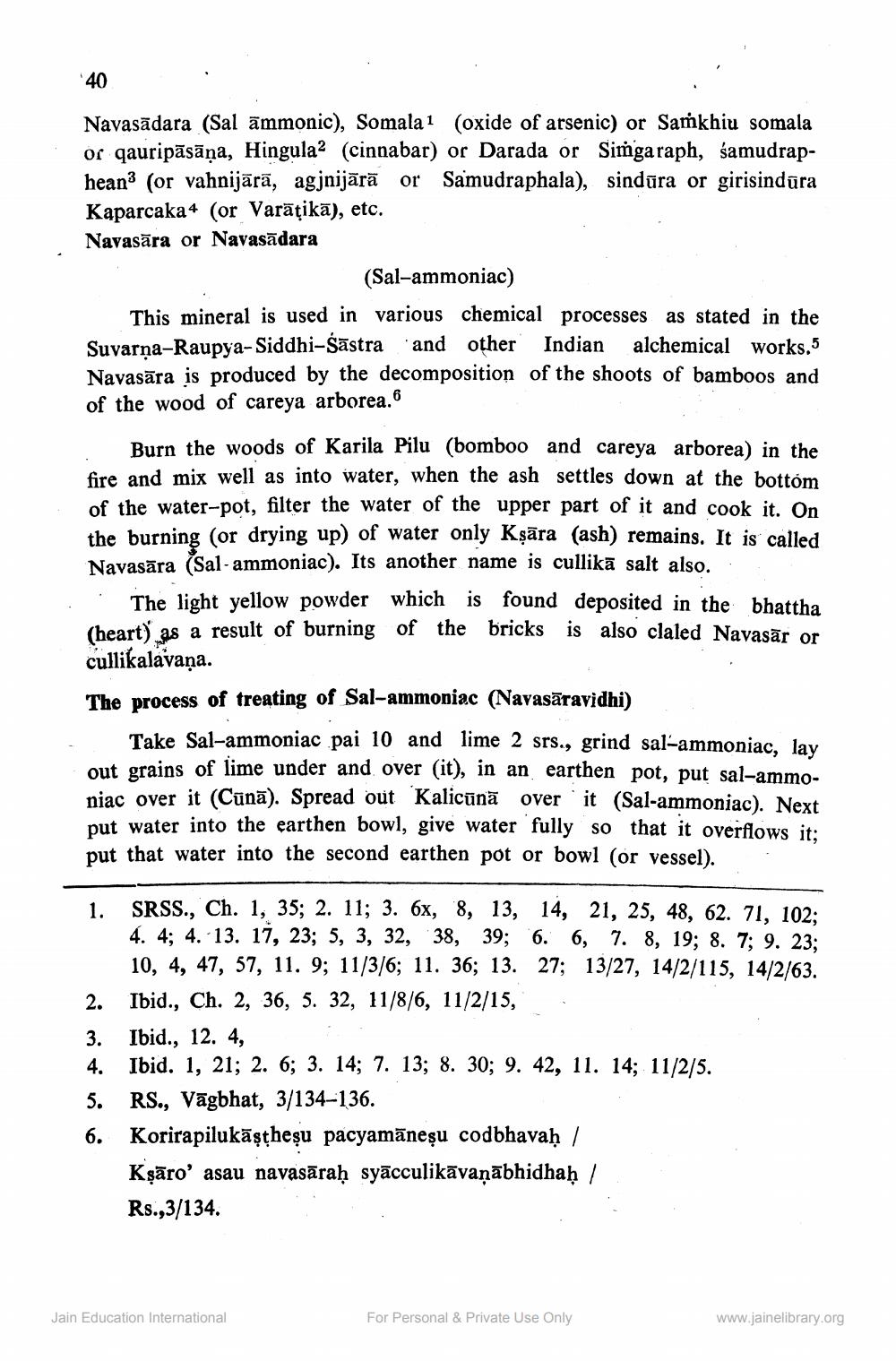________________
40
Navasādara (Sal ammonic), Somalai (oxide of arsenic) or Samkhiu somala or qauripāsāņa, Hingula2 (cinnabar) or Darada or Simga raph, śamudraphean (or vahnijārā, agjnijārā or Samudraphala), sindūra or girisindūra Kaparcaka+ (or Varātikā), etc. Navasāra or Navasādara
(Sal-ammoniac)
This mineral is used in various chemical processes as stated in the Suvarna-Raupya-Siddhi-Šāstra and other Indian alchemical works.5 Navasāra is produced by the decomposition of the shoots of bamboos and of the wood of careya arborea. 6
Burn the woods of Karila Pilu (bomboo and careya arborea) in the fire and mix well as into water, when the ash settles down at the bottom of the water-pot, filter the water of the upper part of it and cook it. On the burning (or drying up) of water only Kşāra (ash) remains. It is called Navasāra (Sal-ammoniac). Its another name is cullikā salt also.. • The light yellow powder which is found deposited in the bhattha (heart) as a result of burning of the bricks is also claled Navasār or cullikalavaņa. The process of treating of Sal-ammoniac (Navasāravidhi)
Take Sal-ammoniac pai 10 and lime 2 srs., grind sal-ammoniac, lay out grains of lime under and over (it), in an earthen pot, put sal-ammoniac over it (Cūnā). Spread out Kalicūnā over it (Sal-ammoniac). Next put water into the earthen bowl, give water fully so that it overflows it: put that water into the second earthen pot or bowl (or vessel).
1.
2. 3. 4. 5. 6.
SRSS., Ch. 1, 35; 2. 11; 3. 6x, 8, 13, 14, 21, 25, 48, 62. 71, 102; 4. 4; 4. 13. 17, 23; 5, 3, 32, 38, 39; 6. 6. 7. 8, 19; 8. 7; 9. 23; 10, 4, 47, 57, 11. 9; 11/3/6; 11. 36; 13. 27; 13/27, 14/2/115, 14/2/63. Ibid., Ch. 2, 36, 5. 32, 11/8/6, 11/2/15, Ibid., 12. 4, Ibid. 1, 21; 2. 6; 3. 14; 7. 13; 8. 30; 9. 42, 11. 14; 11/2/5. RS., Vāgbhat, 3/134-136. Korirapilukāştheşu pacyamāneșu codbhavaḥ | Kşāro' asau navasāraḥ syācculikāvaņābhidhaḥ / Rs.,3/134.
Jain Education International
For Personal & Private Use Only
www.jainelibrary.org




